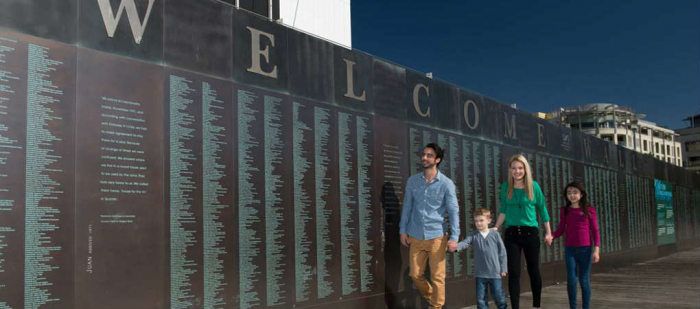For 20 years, a coalition of unions, community groups and academics has argued that any redevelopment of the Eveleigh Locomotive Workshops must include tangible recognition of the social and cultural role played by thousands of rail workers. They were the glue, the bone and gristle which enabled “the heart of the NSW railways” to operate within the cavernous spaces and throbbing machinery of the workshops.
The construction of a commemorative workers’ wall has been proposed as one appropriate and enduring way to recognise their contribution. Historian Professor Lucy Taksa is an ardent advocate for the workers’ wall.
She argues: “The construction of a commemorative workers’ wall would provide a permanent memorial to the working lives of the men and women who worked at Eveleigh between the 1880s and the late 1980s. It would: acknowledge those who ensured the efficiency of railway transport through their work at Eveleigh; provide a source of pride for these people and their families; and recognise the site’s heritage and add meaning to the industrial past for future generations.”
The need to preserve the Eveleigh Railway Precinct’s cultural and social history and the proposal for a workers’ commemorative wall has been consistently identified in the various heritage plans for the precinct and was included in the 2013 Eveleigh Railway Workshops Conservation Management Plan (CMP) adopted by the NSW Government and the NSW Heritage Council.
When the NSW Government sold the Australian Technology Park to Mirvac in 2015 for $263M, the government included a public covenant which demanded the Eveleigh CMP and other heritage requirements be implemented.
In spite of the across the board support for the commemorative workers’ wall, the developer Mirvac has failed to demonstrate any real commitment. In the various development applications it has made, Mirvac support has at best been non-committal. One union submission argues: “Mirvac have since December 2015 put forward four heritage interpretation strategies. Their comments have been inconsistent and open-ended, lacking conviction as to the scale and type of wall and seeing it as an option rather than a genuine commitment.”
To make matters worse, Mirvac has refused to share with unions its consultant’s reports on the public art and public open space strategies. What a bizarre twist: the public being denied vital information about their public spaces on a site being rapidly filled with more and more commercial buildings where the need for public spaces and social history will become more important than ever.

In Western Australia in 2002, the Midland Redevelopment Authority launched a workers’ wall at the former Midlands Railway Workshops and 3,500 people attended its dedication.

At Swindon in the United Kingdom, the railway workshops, similar to the Eveleigh Workshops, provided the economic and social lifeblood for the community for over 100 years. A wall of names was erected at the Swindon Railway Workshops Museum consisting of plaques containing the names of seven generations of workers.

Closer to home, the National Maritime Museum at Darling Harbour has instituted a memorial wall to honour the role of immigrants and their contribution to the Australian community.
The application of previously agreed cultural and social measures to recognise the role of the workers in the history of the Eveleigh Locomotive Workshops must not be allowed to founder in the current tsunami of commercial redevelopment.
Present and future generations must have access to the contributions made by workers and the myriad stories and experiences of Aboriginal, women and migrant workers who worked and forged Redfern and its surrounding communities.




